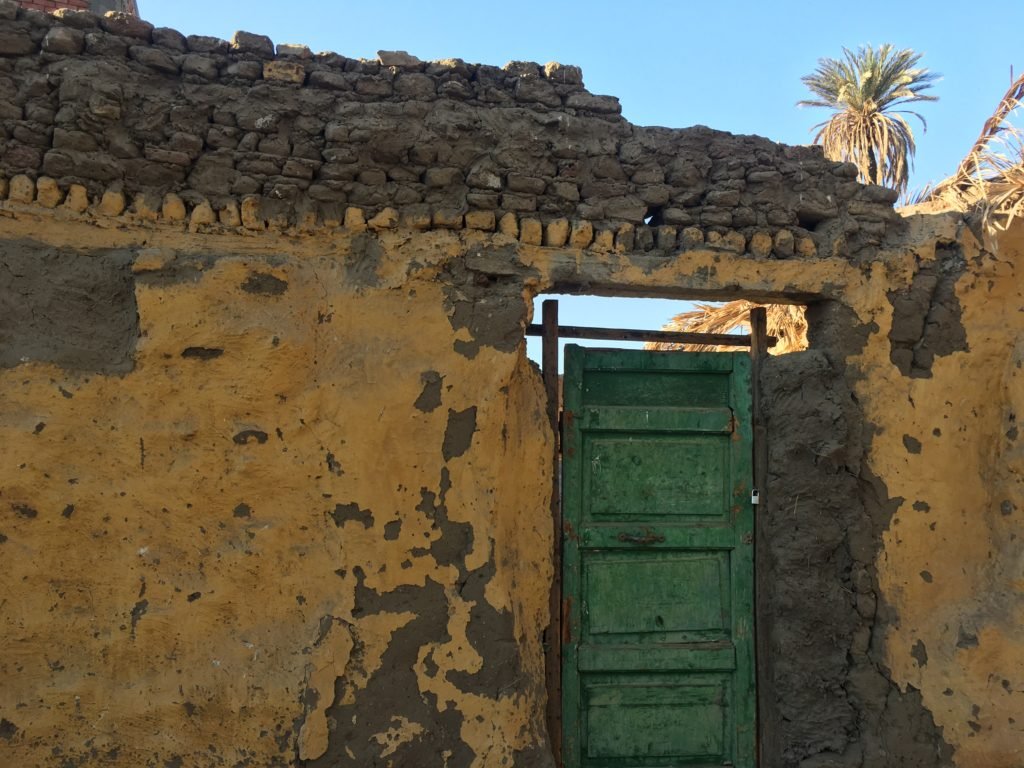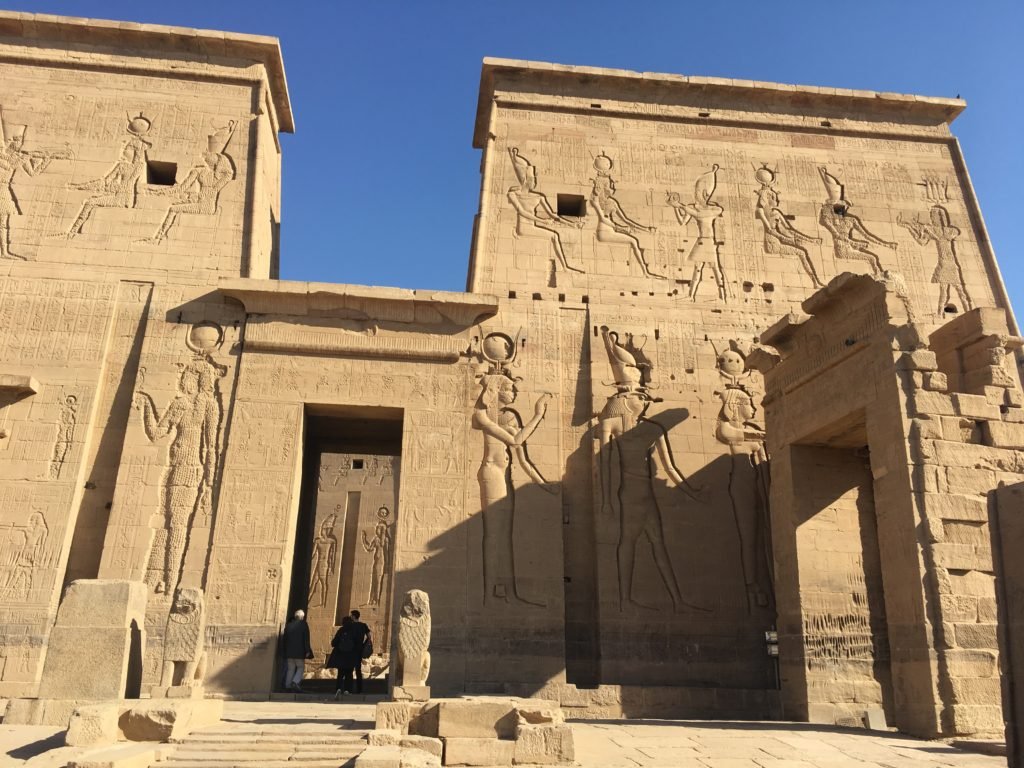
Beauties of Nubia I: Elephantine island and Philae temple
Nubia is a different country, a treasure. The Elephantine island and Philae temple are jewels on the Nile. Nubians are extraordinarily friendly and welcoming. They have their own languages, culture, music and architecture. Aswan is a perfect spot for exploring the region.
The pace of things is slower here, as an invitation to relax and enjoy. The blue waters of the Nile contrast with the golden dunes. On the banks, smooth rocks and thick vegetation flourish. The dance of feluccas and motor boats start at sunrise and stops at midnight. The flavour of Nubian cuisine is in the air.
This place is certainly very different from Cairo and Saqqara in the North!
/ A walk around Elephantine island
/ Explosion of colours in the Nubian village
/ When sailing equals commuting
/ On my way to Philae island
/ Exploring Philae temple
/ Trajan’s kiosk and Hathor temple
/ Related: Nubia, Egypt, Aswan, Philae temple, Elephantine island, Felucca
/ Inspiration:
Ramses – The Son of Light (by Christian Jacq, 1995)
The Mummy (film by Stephen Sommers, 1999)
Rome (series by Bruno Heller, 2005-2007)
A walk around Elephantine island
Elephantine island is located near the Nile’s first cataract. There are no cars on the island and it is home to several Nubian villages. Various boats connect Elephantine island to the mainland. Indeed, I can see numerous ferry boats and feluccas go back and forth between the Nile river banks to transport passengers.

Luxurious vegetation characterizes the island. Palm trees offer delightful shade during the warm afternoons. Kids play football on the sand. People attend their daily occupation. Everyone is friendly and send greetings.
The landscape from the banks is beautiful. Massive grey rocks dive into the Nile blue waters. On the background, the sand dunes stand high. Sometime the silhouette of a fortress detaches itself faraway.

A sense of eternity inhabits this place. I have no difficulty believing this was an important centre of the ancient empire. Its preferred location on the Nile and the archaeological remains visible everywhere attest to that.
It is not clear where the name of Elephantine island comes from. Some say it is related to its shape. From the sky, it bares similarity with an elephant tusk.

Following the stream of the river, I reach the level of Kitchener’s island. Also called El-Nabatat island, it hosts the Aswan Botanical Garden. With its flowers and high trees, it has a taste of Paradise.

Explosion of colours in the Nubian village
My host Ziggy, a native Nubian, shows me around the island. Getting lost in the tiny alleys is the best way to explore the village. The Nubian architecture is not without reminding me of Santorini Greek island. Similarly, the roofs here have this particular ark shape.

The mud brick walls are painted with shimmering colours. Variations of yellow, red, blue and green are an enchantment for the eyes. Some buildings are clearly ancient while others are more modern. Still the colour pattern remains, no matter the age of the building.

I got lucky to penetrate inside a traditional Nubian house. Behind the wooden door, tiny stairs climb to the first terraced floor. From there, you have a view on the other houses in the village. The blue colour inside the building makes the atmosphere slightly cooler.

Walking further, I come across a sheep herd. They actually look pretty cool and play the game of superstar posing for a magazine! So of course I cease the occasion to make a group portrait.
The sun goes down and shadows grow larger. The feluccas come back to the island shores. Sailors bring the sails down in the twilight. The island becomes quiet. Until the sun rises again and another day starts in the morning.

When sailing equals commuting
Sailing becomes part of your daily life when you live on Elephantine island. The island is not connected to the mainland by any bridge. Instead of taking the bus or subway, you simply take the ferry boat. Males and females have their own dedicated area on the ferry boat. Men at the rear and women at the front.

There are three piers on the island. One facing the Archangel Michael cathedral. The second is in the middle of Elephantine. And the third is at the northern end of the island. The rotation runs every five minutes or so. So you never have to wait long to cross the Nile.
The sailing boats show would not be complete without the traditional feluccas. Wooden white painted boats with their triangular sail, they are part of the landscape. At any time of the day, from sunrise to sunset, they make a lovely sight. A reminiscence of Ancient Egypt and Nubia.

On my way to Agilkia island
Since ancient times, the Nile was marked by the cataracts. These natural milestones marked ancient Nubia territory. In 1902, a first dam was built ahead of Aswan, followed by the high dam in 1960. The first Aswan dam resulted in the creation of a lake. Philae island and its temples got flooded part of the year.

The high dam submerged the island. Were it not for the colossal efforts from Unesco and the Egyptian Antiquities Organization, the Philae treasures would have been lost forever.
Between 1972 and 1980, a coffer dam was built around the Philae island. The temples were dismantled stone by stone and rebuilt on nearby Agilkia island.

Dramatic rocky islands point out of the lake’s waters. High above the surface stands Philae temple. It is one of the most recent temples of Ancient Egypt. The complex was built under the Ptolemaic and Roman periods (4th century BC – 4th century AD).

It was an important religious centre. Philae temple was dedicated to Isis, mother goddess. Long after the Roman conquest, it remained a place of worship of the ancient pageant gods. The whole site is both impressive and well proportionate.
Exploring Philae temple
Everything, from top to bottom, is carved with figures and hieroglyphs. Each column, the walls, the ceilings, tell a story. From afar, Philae temple is a complex organization of columns, portals and rooms. Dimensions are big but not oversized.

Through the windows, the lake is stunning blue under the morning sun. I raise my head and contemplate the carved faces of Isis on top of the columns.
Carved vultures and mighty gods are watching down the temple’s corridors and high walls.

The massive walls tell stories I cannot read as I do not understand the hieroglyphs language. Tales of after life and power, judging by the characters depicted. One courtyard succeeds to another. Until I finally enter the main temple.

Inside, the upper level of the carved walls is black while the lower level is white. It marks the water level when the temple was flooded.
The sculptures and carvings are amazingly delicate and detailed. The artists paid special attention to the facial expressions, the hair style and clothing.

Philae temple includes several rooms, all richly ornamented. Here and there, the visitor can read the inscriptions left by early Egyptologists and soldiers. I imagine the whole temple would have been painted in ancient times.
Today, only the plain carved stones remain. This is how it would have looked like in the early days of its construction.

Trajan’s kiosk and Hathor temple
If Philae is the biggest temple of the religious complex, there are other structures on the island. They are smaller in size but as beautiful in architecture and decoration. Among them are the kiosk built by Roman emperor Trajan and the Hathor temple.

Trajan’s kiosk looks like a square pavilion, supported by massive columns. Its terrace looks upon the Nile, now a lake since the dams were built. The kiosk is a perfect mix of Egyptian and Roman influences. The structure itself is clearly Roman. While the open lotus capping the columns and the hieroglyphs covering the walls are Egyptian.
I was in Lebanon last month, and the kiosk echoes a miniature version of the Bacchus temple in Baalbek.

Nothing much remains of the nearby temple dedicated to Hathor, except exceptional carvings. Hathor is is goddess of love, beauty, music, motherhood and joy. Its small temple is a beauty. I call it the “merry baboons hall”.
Various baboons and others characters play music instruments. Men come back from the hunt carrying antelopes on their shoulders. The whole temple is an invitation to celebrate and party.

What a sight it must have been when celebrations happened. With a bit of imagination, I see the processions of priests and people, carrying offerings to the gods. Music, colours and dancing would have filled the island.

It is time to leave Agilkia island and make our way through the crowded motor boats at the pier. We circle round the island. The Trajan’s kiosk stands high above us like a sentry. Eventually, I say goodbye to this special place and head back to Aswan. The river Nile and its banks have yet more treasures.
Want to know more about Nubia and Aswan? Here are a few links:
http://www.crystalinks.com/nubia.html




